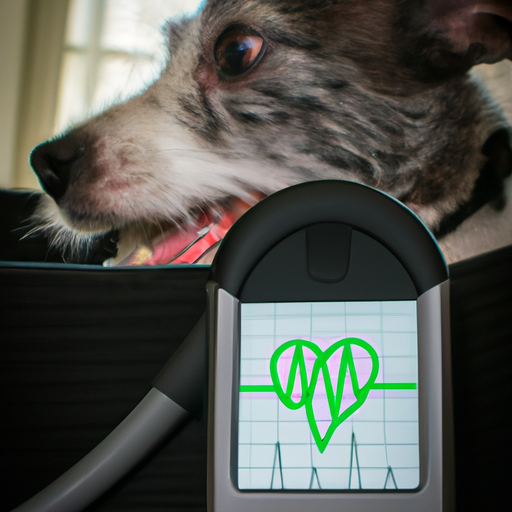As a dog owner, you are always on the lookout for signs and symptoms that indicate your dog’s health status. One vital sign that can give you a lot of information about your dog’s health is their heart rate. But do you know what a normal heart rate for dogs is? This comprehensive guide will help you understand everything you need to know about a dog’s heart rate.
Understanding the Dog’s Heart Rate
The heart rate of a dog varies depending on several factors, such as size, age, breed, and overall health condition. Generally, a healthy adult dog’s heart rate ranges from 60 to 140 beats per minute (bpm), while puppies and smaller dogs tend to have a faster heart rate, ranging from 120 to 160 bpm.
Here is a simple table to help you understand the average heart rate per minute for different dog categories:
| Category | Average Heart Rate |
|---|---|
| Puppies | 120-160 bpm |
| Small Dogs | 90-140 bpm |
| Medium Dogs | 70-120 bpm |
| Large Dogs | 60-100 bpm |
Factors That Affect a Dog’s Heart Rate
Several factors can cause fluctuations in your dog’s heart rate. Here are some of the most common:
- Size: Smaller dogs and puppies generally have a faster heart rate than larger dogs and adult dogs.
- Age: Puppies tend to have a faster heart rate than adult dogs.
- Health Condition: Health conditions such as heart disease, anemia, or fever can significantly affect a dog’s heart rate.
- Activity Level: A dog’s heart rate will naturally increase during exercise and decrease during rest.
- Stress or Excitement: Emotional states can also affect a dog’s heart rate.
How to Measure Your Dog’s Heart Rate
Measuring your dog’s heart rate at home is relatively easy, and you can do it in these simple steps:
- Locate the Heartbeat: The easiest place to find your dog’s heartbeat is in the chest area, just behind the front leg.
- Count the Beats: Use a stopwatch or your phone’s timer to count the number of beats for 15 seconds.
- Calculate the Heart Rate: Multiply the number of beats you count in 15 seconds by 4 to get the heart rate per minute.
Remember, these measurements are estimates. For an accurate heart rate reading, you should visit a veterinarian.
When to Be Concerned About Your Dog’s Heart Rate
While some fluctuations in your dog’s heart rate are normal, a persistent high or low heart rate could indicate a health problem. If your dog’s heart rate is consistently above or below the average range, it’s time to seek professional help.
Symptoms to watch out for:
– Lethargy
– Shortness of breath
– Loss of appetite
– Fainting or collapsing
FAQs
Q: What is a normal heart rate for dogs?
A: A normal heart rate for adult dogs ranges from 60 to 140 beats per minute. Puppies and smaller dogs tend to have a faster heart rate, from 120 to 160 bpm.
Q: How can I measure my dog’s heart rate at home?
A: You can measure your dog’s heart rate by counting the number of heartbeats for 15 seconds and multiplying that number by 4.
Q: When should I be concerned about my dog’s heart rate?
A: If your dog’s heart rate is consistently above or below the normal range, it’s time to consult a veterinarian. Also, watch out for symptoms like lethargy, shortness of breath, loss of appetite, and fainting.
Q: Does a dog’s size affect its heart rate?
A: Yes, smaller dogs and puppies generally have a faster heart rate than larger dogs.
Q: Can emotional states affect a dog’s heart rate?
A: Yes, stress and excitement can cause a temporary increase in your dog’s heart rate.
Being aware of your dog’s heart rate and understanding what is normal can help you detect potential health issues early. Remember, as a caregiver, your dog’s health and wellbeing are in your hands.



